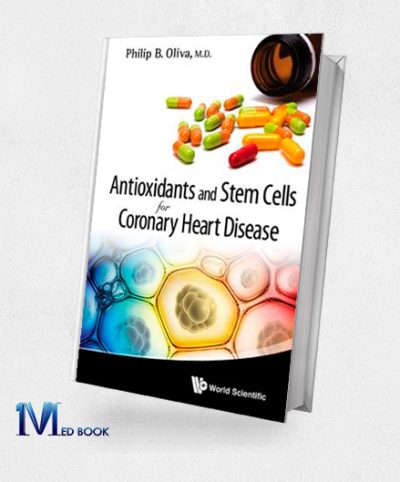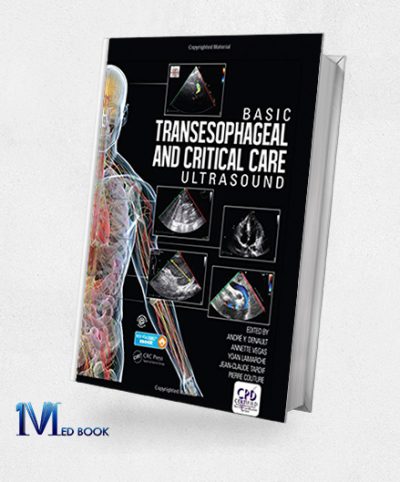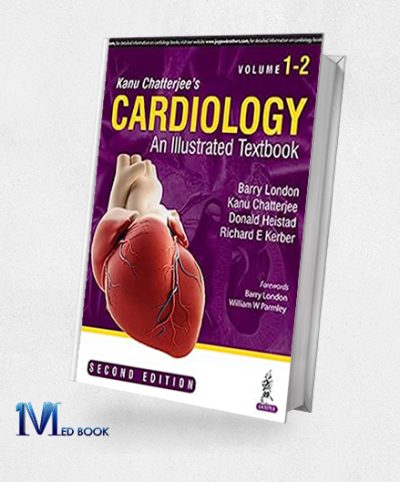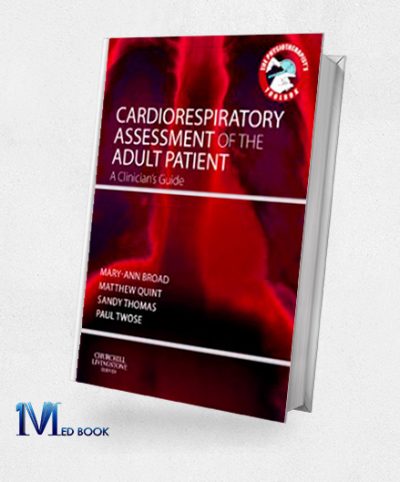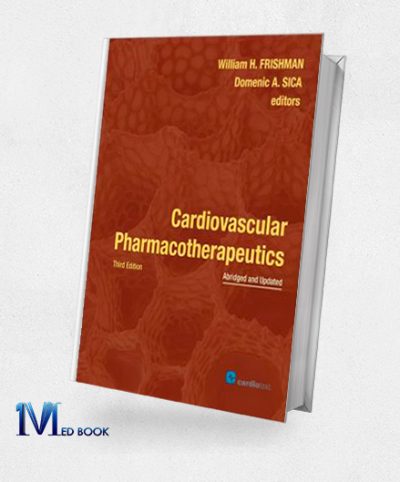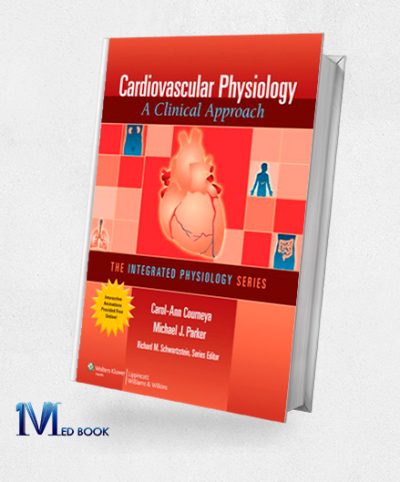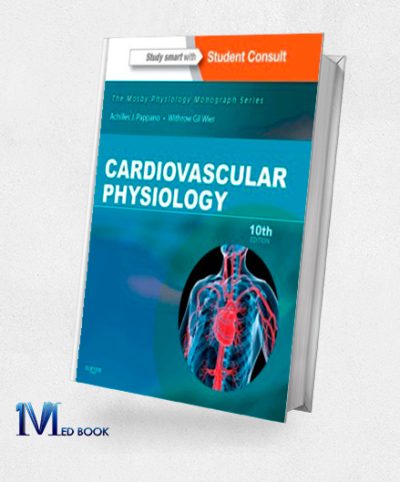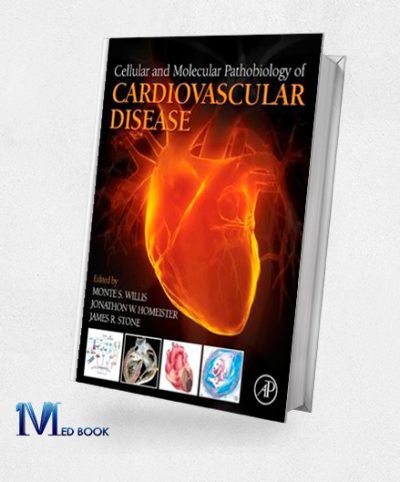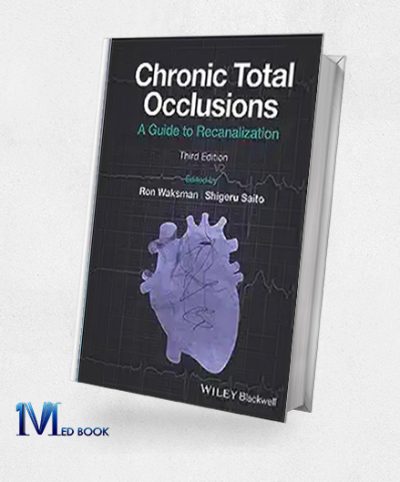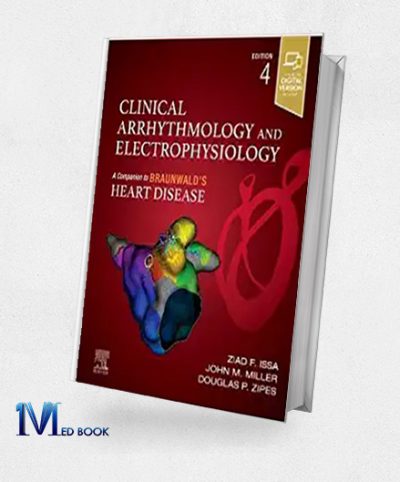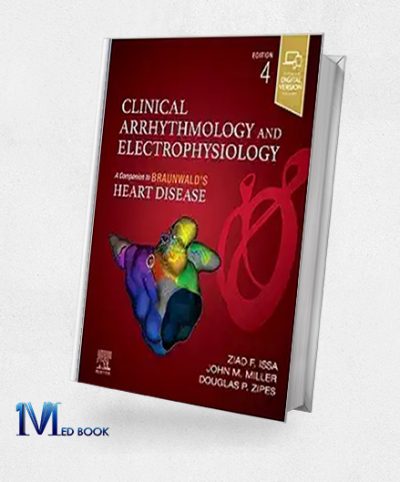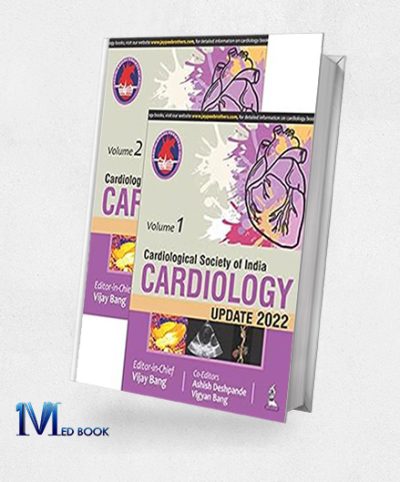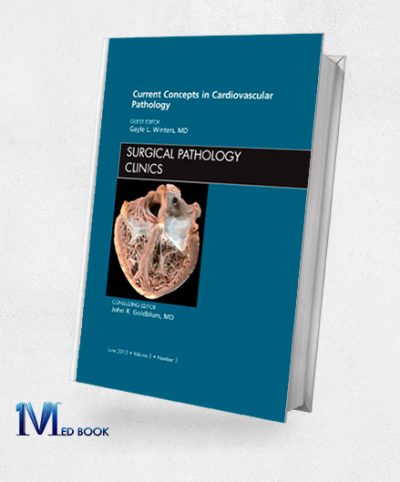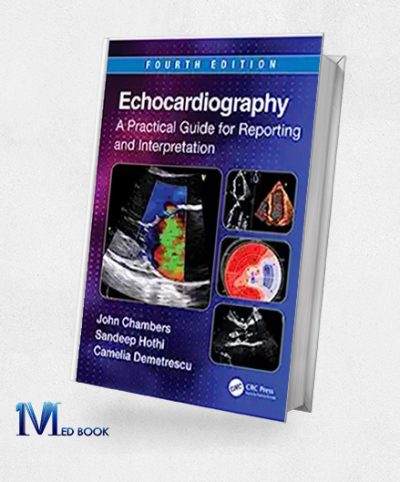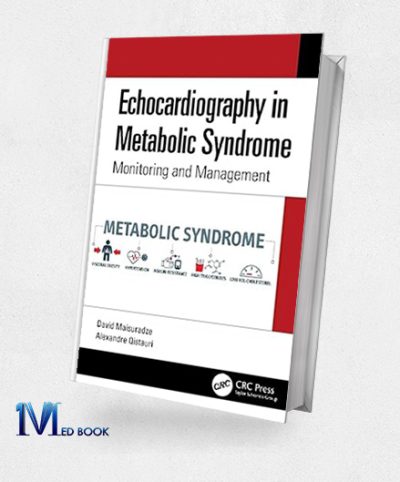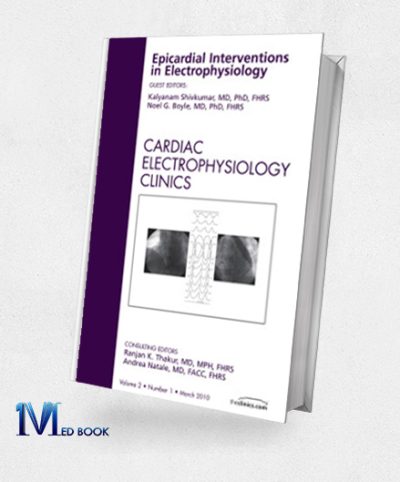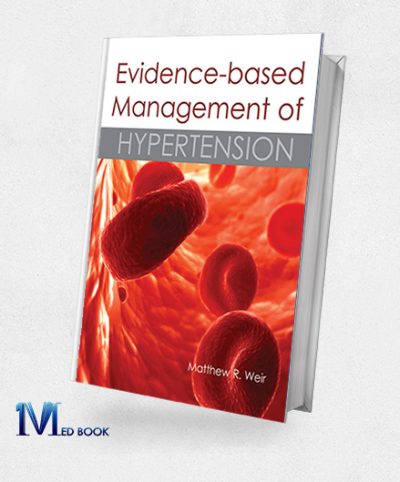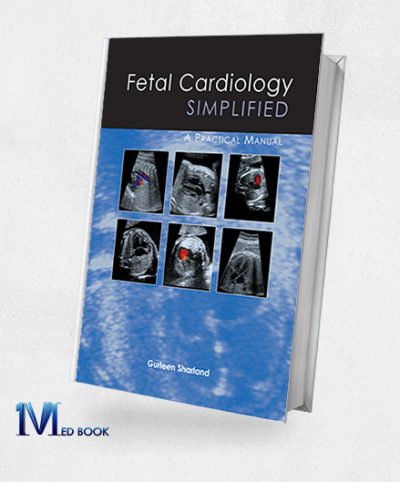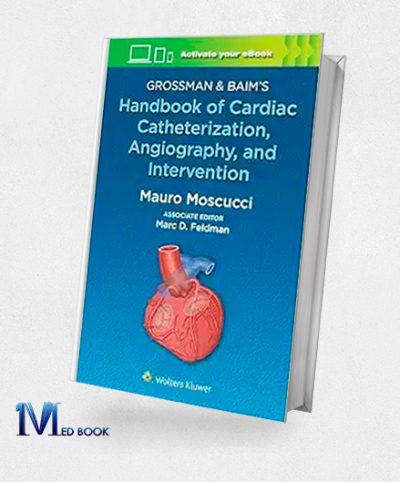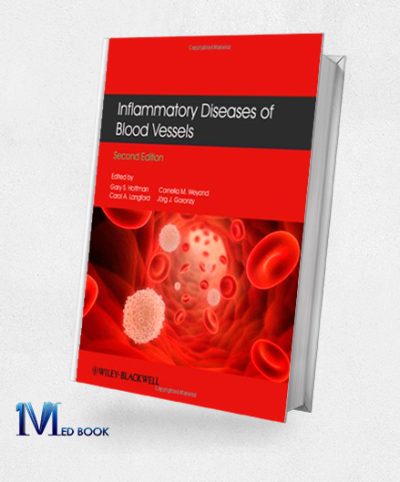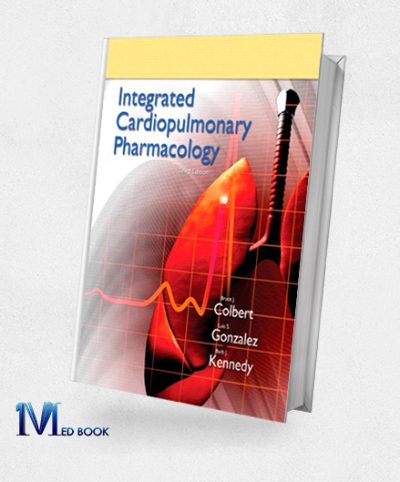Cardiology
Anatomy for Cardiac Electrophysiologists A Practical Handbook
Original price was: $140.13.$23.00Current price is: $23.00.Antioxidants and Stem Cells for Coronary Heart Disease
Original price was: $134.16.$22.00Current price is: $22.00.Basic Transesophageal and Critical Care Ultrasound (Original PDF from Publisher)
Original price was: $133.04.$35.00Current price is: $35.00.Cardiology An Illustrated Textbook (2 Volume Set), 2nd Edition (Original PDF From Publisher)
Original price was: $475.20.$35.00Current price is: $35.00.Cardiorespiratory Assessment of the Adult Patient (Original PDF from Publisher)
Original price was: $42.00.$22.30Current price is: $22.30.Cardiovascular Pharmacotherapeutics Abridged and Updated 3rd Edition
Original price was: $89.00.$23.00Current price is: $23.00.Cardiovascular Physiology A Clinical Approach (Integrated Physiology)
Original price was: $40.51.$20.40Current price is: $20.40.Cardiovascular Physiology Mosby Physiology Monograph Series 10th Edition (Original PDF from Publisher)
Original price was: $42.20.$22.30Current price is: $22.30.Cellular and Molecular Pathobiology of Cardiovascular Disease (ORIGINAL PDF from Publisher)
Original price was: $143.89.$27.90Current price is: $27.90.Chronic Total Occlusions A Guide to Recanalization 3rd Edition (EPUB + Converted PDF)
Original price was: $200.00.$28.00Current price is: $28.00.Clinical Arrhythmology And Electrophysiology (Companion To Braunwald’s Heart Disease), 4th Edition (EPUB)
Original price was: $229.99.$28.00Current price is: $28.00.Clinical Arrhythmology and Electrophysiology 4th Edition (Companion to Braunwald’s Heart Disease) (True PDF)
Original price was: $229.99.$12.00Current price is: $12.00.CSI Cardiology Update 2022 (2 Volumes) (Original PDF from Publisher)
Original price was: $108.00.$32.00Current price is: $32.00.Current Concepts in Cardiovascular Pathology An Issue of Surgical Pathology Clinics (Original PDF from Publisher)
Original price was: $50.99.$22.90Current price is: $22.90.Echocardiography A Practical Guide For Reporting And Interpretation, 4th Edition (Original PDF From Publisher)
Original price was: $86.95.$28.00Current price is: $28.00.Echocardiography in Metabolic Syndrome Monitoring and Management (Original PDF from Publisher)
Original price was: $74.79.$24.00Current price is: $24.00.Epicardial Interventions in Electrophysiology, An Issue of Cardiac Electrophysiology Clinics (Original PDF from Publisher)
Original price was: $91.25.$22.00Current price is: $22.00.Evidence-based Management of Hypertension (EPUB)
Original price was: $119.00.$22.00Current price is: $22.00.Fetal Cardiology Simplified (EPUB)
Original price was: $135.00.$21.00Current price is: $21.00.Genetics of Cardiovascular Disease (ORIGINAL PDF from Publisher)
Original price was: $171.00.$29.40Current price is: $29.40.Grossman and Baims Handbook of Cardiac Catheterization Angiography and Intervention (EPUB)
Original price was: $74.99.$38.00Current price is: $38.00.Hypertension and Hypertensive Heart Disease, An Issue of Cardiology Clinics (Original PDF from Publisher)
Original price was: $119.00.$22.00Current price is: $22.00.Inflammatory Diseases of Blood Vessels 2nd Edition (Original PDF from Publisher)
Original price was: $195.44.$21.00Current price is: $21.00.Integrated Cardiopulmonary Pharmacology (3rd Edition)
Original price was: $76.29.$24.00Current price is: $24.00.Cardiology
Introduction to Cardiology
Cardiology stands as a pivotal discipline within the realm of medical science, playing a vital role in the comprehensive study and treatment of the cardiovascular system. As the branch of medicine dedicated to understanding the intricacies of the heart and circulatory system, cardiology holds unparalleled significance in unraveling the mysteries of heart function. The heart, with its ceaseless rhythmic beats and complex interactions, serves as the epicenter of our circulatory system, and a thorough comprehension of its workings is foundational to advancing medical knowledge. Moreover, cardiology has emerged as an indispensable tool for diagnosing a spectrum of cardiovascular diseases that afflict millions worldwide. From congenital anomalies to acquired conditions, the expertise of cardiologists is crucial in early detection, precise diagnosis, and the formulation of effective treatment strategies. Beyond the realm of illness, cardiology extends its influence to the realm of preventative care, actively contributing to the promotion of heart health. Through advancements in research, diagnostics, and intervention, cardiology not only addresses existing cardiovascular challenges but also plays a proactive role in fostering a society where heart health is a paramount consideration. In this introduction, we delve into the multifaceted significance of cardiology, emphasizing its role in unraveling heart function intricacies, diagnosing cardiovascular diseases, and championing the cause of overall heart well-being.
Anatomy and Physiology of the Heart
In the realm of cardiology, a profound understanding of the intricate anatomy and physiology of the heart serves as the cornerstone for unraveling the complexities of cardiac function. The heart, a remarkable organ, is a muscular pump comprised of specialized structures designed to facilitate efficient circulation. An exploration of its anatomy reveals four chambers – two atria and two ventricles – intricately arranged to orchestrate the unidirectional flow of blood. The physiology of the heart delves into the dynamic processes of contraction and relaxation, synchronized by a sophisticated electrical conduction system. This system, governed by nodes and pathways, ensures the rhythmic beating that propels blood throughout the circulatory system. As blood traverses the heart, it follows a meticulous circulation pattern, supplying oxygen and nutrients to the body’s tissues and organs. The collaboration between the heart’s structural components and its electrical conduction system exemplifies the precision that underlies proper cardiac function. In this exploration, we delve into the nuanced details of cardiac anatomy and physiology, shedding light on the marvel of the heart’s design and the orchestrated mechanisms that guarantee its essential role in sustaining life.
Cardiovascular Diseases and Risk Factors
The landscape of cardiovascular health is marked by a spectrum of diseases that significantly impact individuals worldwide. Key among these are coronary artery disease (CAD), heart failure, and arrhythmias, each with its distinct characteristics and implications. Coronary artery disease, characterized by the narrowing of arteries supplying the heart muscle, is often linked to atherosclerosis and poses a substantial risk for heart attacks. Heart failure, a condition where the The heart’s ability to pump blood can be compromised, resulting in inadequate blood circulation, and irregular heart rhythms, known as arrhythmias, can disrupt the heart’s electrical system. These two cardiovascular diseases share common risk factors, which highlight the intersection of lifestyle choices and genetic predispositions. Poor diet, sedentary behavior, smoking, and excessive alcohol consumption are significant contributors to cardiovascular risk. Additionally, genetic predispositions, such as family history and genetic traits, can further increase susceptibility. Recognizing and addressing these risk factors is crucial in preventing cardiovascular disease. It highlights the importance of comprehensive strategies that include lifestyle modifications, genetic awareness, and timely medical interventions to reduce the global burden of cardiovascular diseases.
Diagnostic Tools in Cardiology
In the field of cardiology, a suite of sophisticated diagnostic tools plays a pivotal role in unraveling the intricacies of heart-related conditions. Electrocardiography (ECG) stands as a fundamental method, capturing the heart’s electrical activity through the placement of electrodes on the skin. ECG provides crucial insights into rhythm abnormalities, ischemic changes, and conduction disturbances. Echocardiography employs ultrasound waves to create detailed images of the heart’s structure and function, offering invaluable information on chamber dimensions, valve function, and overall cardiac performance. Cardiac catheterization, a more invasive yet highly informative procedure, involves the insertion of a catheter into blood vessels to assess pressures, collect blood samples, and visualize coronary arteries. These diagnostic tools collectively serve as indispensable aids in the diagnosis and assessment of various heart-related conditions, enabling healthcare professionals to formulate precise treatment plans and interventions. Their integration underscores the remarkable strides in cardiology, ensuring a comprehensive understanding of cardiac health and facilitating tailored approaches to patient care.
Interventional Cardiology and Procedures:
Interventional cardiology stands at the forefront of cardiovascular care, offering advanced procedures designed to treat and manage a spectrum of cardiovascular diseases. Angioplasty, a cornerstone intervention, involves the insertion of a catheter with a deflated balloon into narrowed arteries, subsequently inflating the balloon to alleviate blockages and restore blood flow. Stent placement often follows angioplasty, wherein a mesh-like device is deployed to provide structural support to the artery, preventing the recurrence of blockages. Cardiac ablation is another key procedure, aiming to correct arrhythmias by selectively destroying or isolating abnormal electrical pathways in the heart. These interventions play a pivotal role in addressing conditions such as coronary artery disease and arrhythmias, offering minimally invasive alternatives to conventional surgeries. By precisely targeting and mitigating cardiovascular issues, interventional cardiology procedures contribute significantly to the overall management and treatment of cardiovascular diseases, ushering in a new era of advanced, patient-centric care.
Pharmacotherapy in Cardiology:
Pharmacotherapy in cardiology encompasses a diverse array of medications crucial for the effective treatment and management of cardiovascular diseases. Antiplatelets, such as aspirin and clopidogrel, play a pivotal role in preventing blood clot formation by inhibiting platelet aggregation. Beta-blockers, like metoprolol and carvedilol, are instrumental in managing conditions such as hypertension and heart failure by reducing the heart’s workload and oxygen demand. Statins, such as atorvastatin and simvastatin, are widely prescribed for their cholesterol-lowering properties, mitigating the risk of atherosclerosis and cardiovascular events. These medications contribute significantly to managing heart health by addressing underlying risk factors and enhancing overall cardiovascular function. The integration of pharmacotherapy into cardiology not only aims to alleviate symptoms but also plays a proactive role in preventing disease progression, highlighting the dynamic synergy between medications and holistic cardiovascular care.
Cardiac Rehabilitation and Lifestyle Changes
Cardiac rehabilitation stands as a pivotal component in the comprehensive care and recovery of individuals grappling with cardiovascular diseases. These rehabilitation programs extend beyond medical interventions, placing a strong emphasis on lifestyle changes that play a transformative role in long-term well-being. Such programs typically integrate supervised exercise regimens, nutritional guidance, and psychological support to address both the physical and emotional aspects of cardiovascular health. Lifestyle modifications form a cornerstone, encouraging individuals to adopt heart-healthy habits such as regular exercise, a balanced diet, smoking cessation, and stress management. The symbiotic relationship between cardiac rehabilitation and lifestyle changes is evident in their collective impact on enhancing cardiovascular function, reducing risk factors, and promoting overall health. By empowering individuals to embrace sustainable lifestyle adjustments, cardiac rehabilitation becomes a catalyst for recovery and establishes a foundation for enduring well-being, marking a crucial step towards breaking the cycle of cardiovascular diseases and fostering heart-healthy living.
Emerging Technologies in Cardiology
The landscape of cardiology is undergoing a revolutionary transformation with the integration of emerging technologies that promise to redefine diagnostics, monitoring, and personalized care. Wearable devices, equipped with sophisticated sensors, offer real-time data on vital signs, physical activity, and even heart rhythms, providing individuals and healthcare professionals with continuous insights into cardiovascular health. Telemedicine, facilitated by digital platforms and connectivity, enables remote consultations, monitoring, and follow-ups, enhancing accessibility to cardiological expertise. Artificial intelligence (AI) algorithms, trained on vast datasets, demonstrate remarkable capabilities in interpreting complex cardiac data, aiding in the early detection of abnormalities and personalized risk assessment. These innovations collectively contribute to a paradigm shift, fostering proactive healthcare by enabling early interventions, continuous monitoring, and tailored treatment plans. As cardiology embraces these technologies, the potential for improved patient outcomes, increased efficiency, and a more personalized approach to cardiovascular care becomes increasingly evident, marking a transformative era in the field.
Pediatric Cardiology
Pediatric cardiology is a specialized branch of medicine dedicated to the unique cardiovascular needs of children, particularly focusing on congenital heart conditions that manifest from birth. Common congenital heart conditions in children include ventricular septal defects, atrial septal defects, tetralogy of Fallot, and coarctation of the aorta, among others. Diagnostic approaches in pediatric cardiology often involve non-invasive techniques such as echocardiography, electrocardiography (ECG), and imaging modalities like magnetic resonance imaging (MRI) and computed tomography (CT) scans. Pediatric cardiologists, with their specialized training, provide comprehensive and specialized care to address the diverse cardiovascular issues encountered in the pediatric population. This includes monitoring and managing congenital heart conditions, overseeing surgical interventions when necessary, and collaborating with other pediatric specialists to ensure holistic care for children with cardiovascular challenges. The field of pediatric cardiology plays a crucial role in promoting the well-being of young patients, offering early interventions, and fostering a multidisciplinary approach to address the intricacies of pediatric cardiovascular health.
Global Cardiovascular Health
Global cardiovascular health is a multifaceted challenge with profound implications, impacting populations on a worldwide scale. Cardiovascular diseases (CVDs), encompassing conditions like heart disease and stroke, represent a leading cause of morbidity and mortality globally. However, disparities in access to cardiac care persist, creating inequalities in the prevention, diagnosis, and management of CVDs. These disparities are evident in differences in healthcare infrastructure, socio-economic factors, and geographical regions. The burden of CVDs is often more pronounced in low- and middle-income countries, where resources for cardiovascular care may be limited. International efforts aimed at addressing global cardiovascular health disparities include initiatives focused on preventive measures, health education, and strengthening healthcare systems. Collaborative programs, both regional and global, seek to enhance awareness, provide training for healthcare professionals, and improve access to essential cardiac interventions. The goal is not only to manage existing cardiovascular conditions but also to prevent the onset of CVDs, thereby contributing to the overall improvement of global cardiovascular health on a broad scale.
Conclusion
In conclusion, cardiology emerges as an indispensable discipline, playing a pivotal role in safeguarding cardiovascular health and fostering overall well-being. Through continuous advancements in research and medical interventions, cardiology has witnessed remarkable strides, contributing to improved outcomes for individuals grappling with heart-related conditions. The intricate understanding of cardiac anatomy, coupled with sophisticated diagnostic tools and interventional procedures, enables precise diagnoses and tailored treatment plans. Pharmacotherapy, lifestyle modifications, and innovative interventions further underscore the comprehensive approach employed by cardiologists to address the spectrum of cardiovascular diseases. The integration of emerging technologies, from wearable devices to artificial intelligence, promises to revolutionize diagnostics, monitoring, and personalized care, ushering in a new era of proactive cardiovascular health management. As we navigate this dynamic landscape, the dedication of healthcare professionals and the collaborative efforts on a global scale reflects the commitment to advancing cardiovascular care. In essence, cardiology stands as a beacon of hope, continuously striving towards better outcomes, enhanced quality of life, and a healthier future for individuals facing heart-related challenges.


